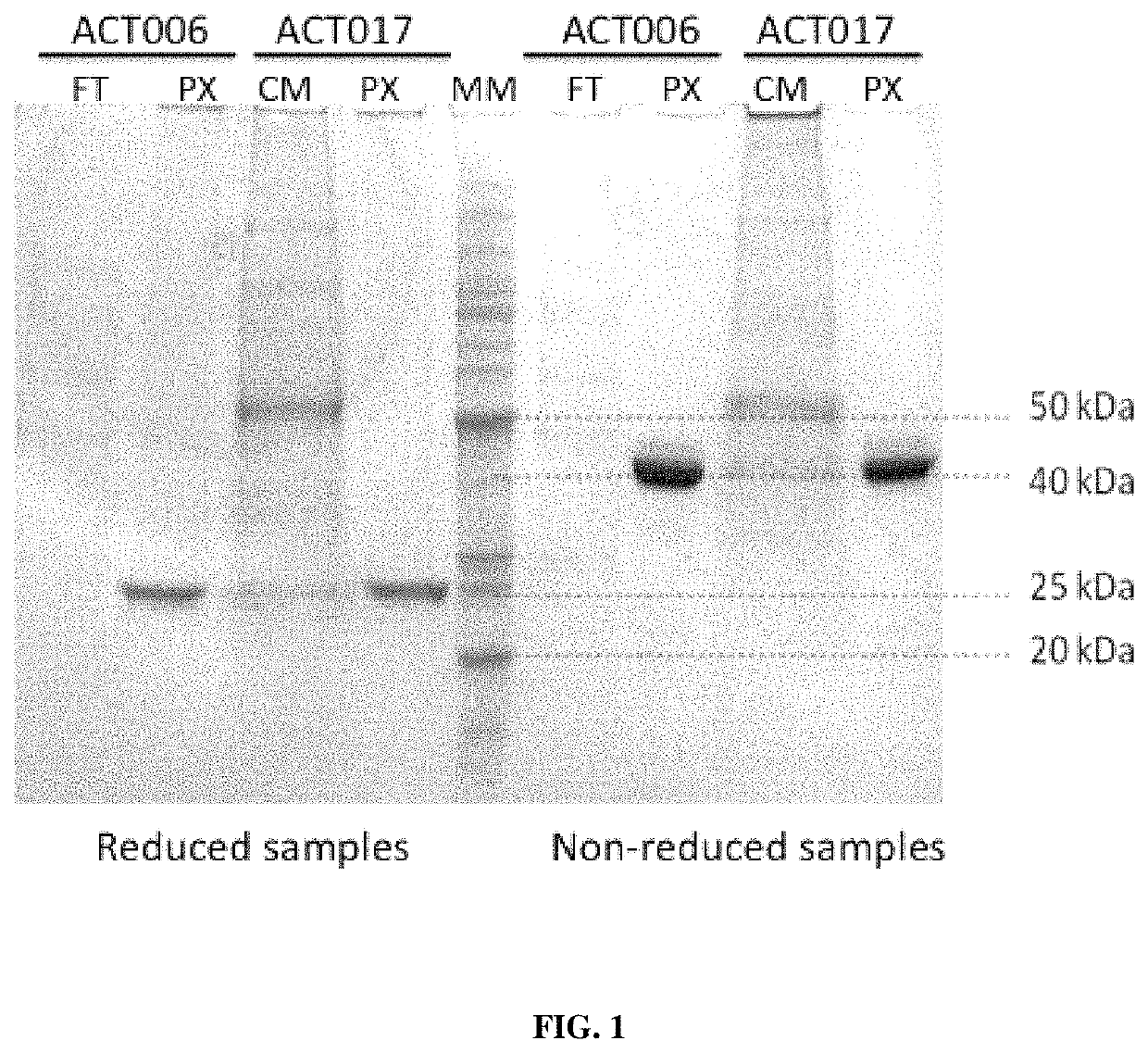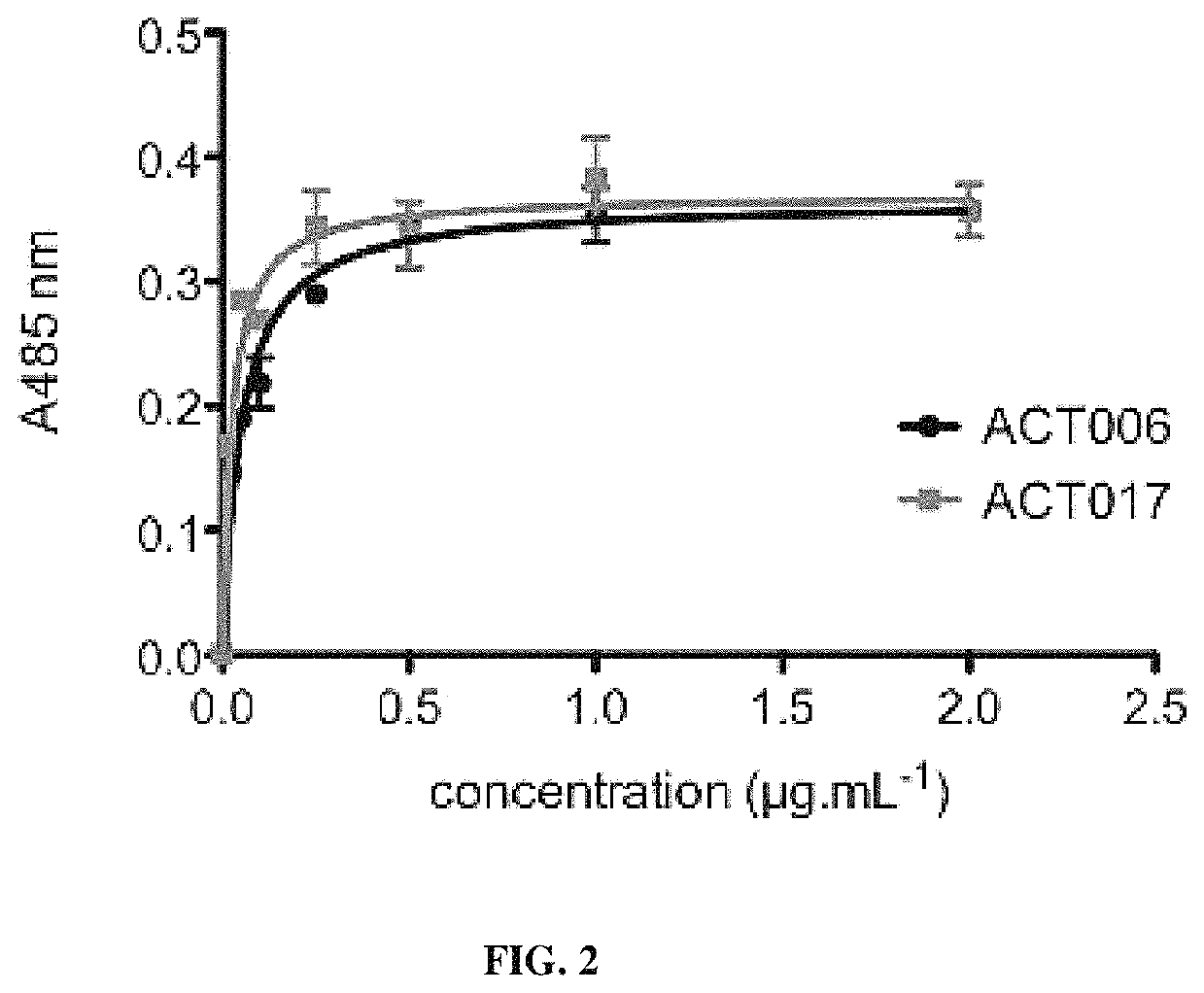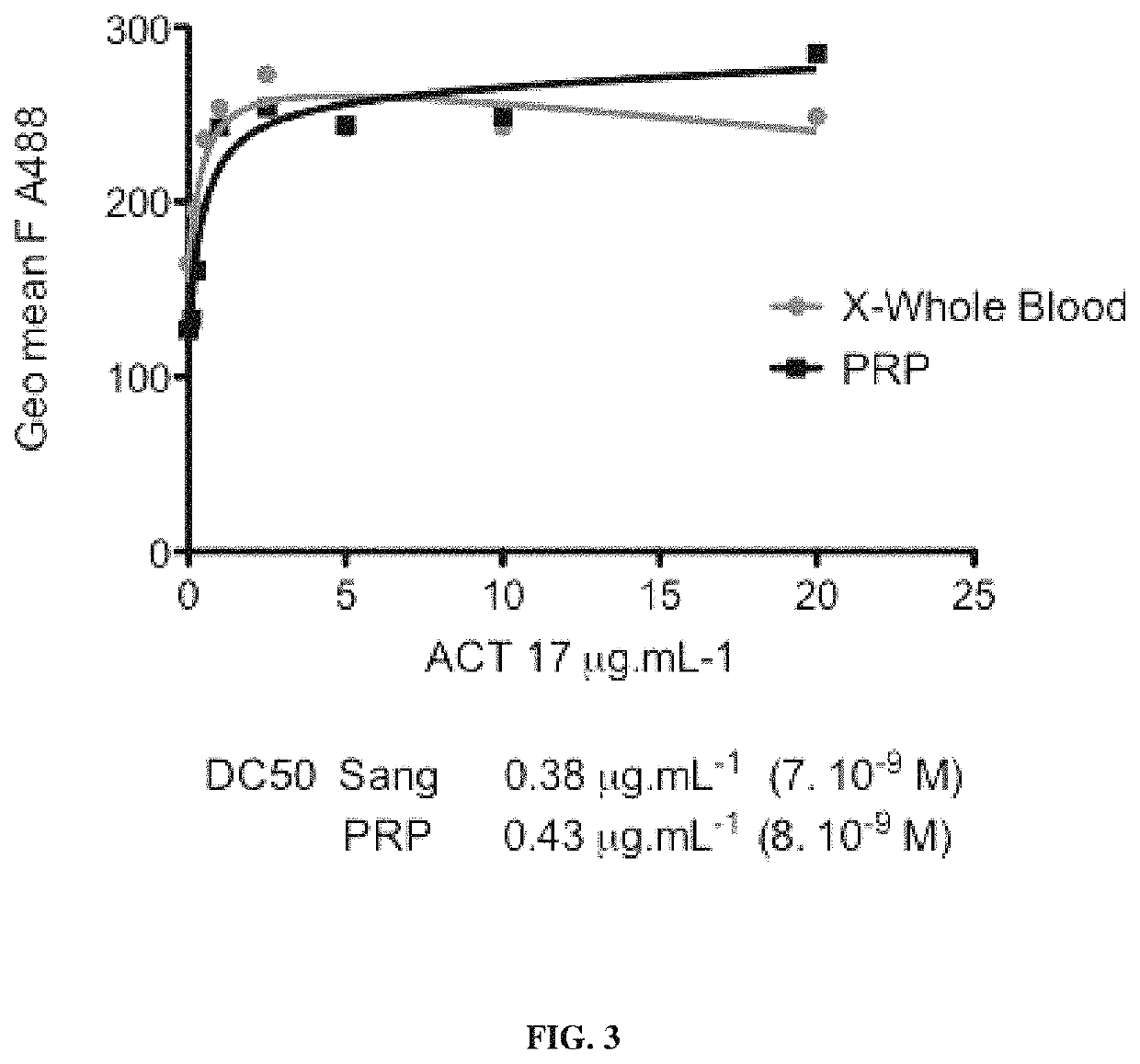Anti-human GPVI antibodies and uses thereof
a glycoprotein and anti-human technology, applied in the field of new antihuman glycoprotein vi antibodies, can solve the problems of not preventing morbidity/mortality for about 15% of patients in the next 6 months, and giving even less encouraging results
- Summary
- Abstract
- Description
- Claims
- Application Information
AI Technical Summary
Benefits of technology
Problems solved by technology
Method used
Image
Examples
example 1
n of ACT017 and ACT006
[0340]Antibodies ACT017 and ACT006 (Fab fragments) were produced in CHO-S cells (Invitrogen) by transient transfection, using standard conditions according to the manufacturer instructions.
[0341]In brief, immediately before transfection, CHO-S cells were splitted and seeded in 10 mL of serum-free growth medium at a density of 0.5-1.0×106 cells / mL. Cells were then transfected with a vector comprising a sequence encoding a light chain and a heavy chain of an antibody of the invention. Culture supernatants were recovered 4 to 5 days after transfection, when cell viability was lower than 80%.
[0342]For ACT017, cells were transfected using a vector comprising SEQ ID NO: 19 and SEQ ID NO: 18, wherein SEQ ID NO: 19 comprises sequences encoding the constant and variable regions of the light chain of ACT017 fused to a signal peptide sequence, and cloning sites, and wherein SEQ ID NO: 18 comprises sequences encoding the constant and variable regions of the heavy chain of ...
example 2
o GPVI-Fc
[0346]Soluble GPVI-Fc was produced as follows: the open-reading frame of the predicted extracellular domain of GPVI was PCR-amplified from the Kozak sequence before the first methionine to asparagine 269, immediately prior to the predicted transmembrane sequence. The PCR fragment was ligated into a pCDM8 host vector containing the genomic sequence of the human IgG1 Fc domain, such that the extracellular part of the hGPVI cDNA was fused at its C-terminus via a 3 alanine linker to the hFc sequence. The sequenced DNA construct was transfected into HEK 293T cells. GPVI-Fc was purified from the conditioned media of the cells by affinity chromatography on Protein A agarose according to manufacturer recommendations.
[0347]Microtitration plates were coated with GPVI-Fc in PBS (2 μg / mL, 100 μL per well) overnight at 4° C. Nonspecific binding sites were saturated with 100 μL of 1% BSA in PBS for 120 min. The plates were then incubated with increasing concentrations of the antibody pre...
example 3
lasmon Resonance (BIAcore)
[0349]Binding of ACT017, ACT006 and Fab 9012 to soluble human GPVI were analyzed with surface plasmon resonance using a BIAcore 2000 system (Uppsala, Sweden).
[0350]Soluble GPVI-Fc (produced as described in Example 2) was immobilized in acetate buffer 10 mM pH 6 at a dose ranging from 960 to 1071 RU (corresponding about 6.4 to 7.15 fmol / mm2) onto a Carboxy-Methyl Dextran CMS sensor chip using the amine coupling method (Wizard procedure). The protein is then passed over the immobilized GPVI-Fc in PBS pH 7.4 (10 mM phosphate, 138 mM NaCl, 2.7 mM KCl, pH 7.42 at 25.4° C.) at a flow rate of 20 μL / min at 25° C. Kinetic constants (KA, KD, kon, koff) and affinity are determined using BIAevaluation version 3.0 software, by fitting data to binding model. PBS pH 7.4 is the running buffer.
[0351]Results are shown in the Table 1 below:
[0352]
TABLE 1ACT017ACT006mFab 9O12kon (M−1 · sec−1)5.97 · 1046.65 · 1044.96 · 104koff (sec−1)2.32 · 10−44.76 · 10−48.58 · 10−4KA (M−1)2.57...
PUM
| Property | Measurement | Unit |
|---|---|---|
| molecular weight | aaaaa | aaaaa |
| molecular weight | aaaaa | aaaaa |
| molecular weight | aaaaa | aaaaa |
Abstract
Description
Claims
Application Information
 Login to View More
Login to View More - R&D
- Intellectual Property
- Life Sciences
- Materials
- Tech Scout
- Unparalleled Data Quality
- Higher Quality Content
- 60% Fewer Hallucinations
Browse by: Latest US Patents, China's latest patents, Technical Efficacy Thesaurus, Application Domain, Technology Topic, Popular Technical Reports.
© 2025 PatSnap. All rights reserved.Legal|Privacy policy|Modern Slavery Act Transparency Statement|Sitemap|About US| Contact US: help@patsnap.com



